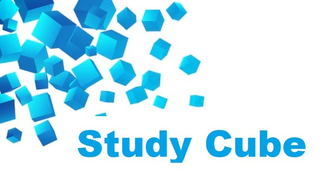Informal
Formal
Letters their are two types
An informal letter is a personal form of communication typically written to friends, family, or acquaintances. It has a more relaxed tone and structure compared to formal letters. Here are the key elements commonly found in an informal letter:
Key Features of an Informal Letter:
Address and Date:
Your address (optional).
Date of writing.
Salutation:
A friendly greeting, such as "Dear [Friend's Name]," or simply "Hi [Name],".
Opening Line:
A casual opener, such as "I hope you’re doing well!" or "It’s been a while!".
Body:
This is the main part of the letter where you share news, updates, ask questions, or discuss topics of interest. It can be conversational and personal.
Feel free to include anecdotes, jokes, or casual language.
Closing:
A friendly way to wrap up, such as "Take care," "Best," or "See you soon," followed by your name.
Example Structure:
Greeting
Body
Closing
Signature
Exam related Informal letters
A formal letter is a type of communication used for professional or official purposes. It adheres to a specific structure and tone, making it suitable for various contexts like job applications, business correspondence, or official requests. Here are its key characteristics:
Key Features:
Structure:
Sender's Address: Your address (top right).
Date: The date the letter is written.
Recipient's Address: The recipient's name and address (left-aligned).
Salutation: A formal greeting (e.g., "Dear Mr./Ms. [Last Name]").
Body: The main content, divided into clear paragraphs.
Closing: A formal sign-off (e.g., "Sincerely," "Yours faithfully,").
Signature: Your handwritten signature (if printed) followed by your typed name.
Tone:
The language should be respectful, professional, and clear. Avoid colloquialisms or overly casual phrases.
Purpose:
Used for job applications, complaints, inquiries, business proposals, or any official communication.
Example Uses:
Applying for a job
Requesting information
Making a formal complaint
Thanking someone for a service or assistance
Example Structure:
Sender's Address
Date
Recipient's Address
Salutation
Body
Closing
Signature and Typed Name
Exam related Formal letters
Example
John Smith
123 Main Street
Anytown, CA 12345
john.smith@email.com
(123) 456-7890
September 26, 2024
Jane Doe
Manager
XYZ Corporation
456 Business Rd.
Business City, CA 67890
Dear Ms. Doe,
I am writing to express my interest in the Marketing Coordinator position advertised on your website. With over five years of experience in digital marketing and a proven track record of successful campaigns, I believe I would be a valuable addition to your team.
In my previous role at ABC Company, I developed and implemented marketing strategies that increased our online engagement by 40% within six months. I am skilled in social media management, content creation, and data analysis, and I am passionate about using these skills to help drive the success of XYZ Corporation.
I would appreciate the opportunity to discuss how my background, skills, and enthusiasms align with the goals of your team. Thank you for considering my application. I look forward to the possibility of speaking with you.
Sincerely,
[Your Signature]
John Smith
Marketing Professional
Example:
[Your Address (optional)]
[Date]
Hi Sarah,
I hope you’re doing well! It’s been ages since we last caught up. I wanted to see if you’d like to grab coffee next week. I’ve got so much to share!
Let me know what day works for you. Can’t wait to hear all about what you’ve been up to!
Take care,
Emily
[Your Name]
[Your Address]
[City, State, Zip Code]
[Email Address]
[Phone Number]
[Date]
[Recipient's Name]
[Recipient's Title]
[Company/Organization Name]
[Company Address]
[City, State, Zip Code]
Dear [Recipient's Name],
[Opening Paragraph: Introduce yourself and state the purpose of the letter.]
[Body Paragraph(s): Provide detailed information, making sure to stay clear and concise. Use separate paragraphs for different points if needed.]
[Closing Paragraph: Summarize your message or state any action you would like the recipient to take. Thank the recipient for their time.]
Sincerely,
[Your Signature (if sending a hard copy)]
[Your Typed Name]
[Your Title (if applicable)]
